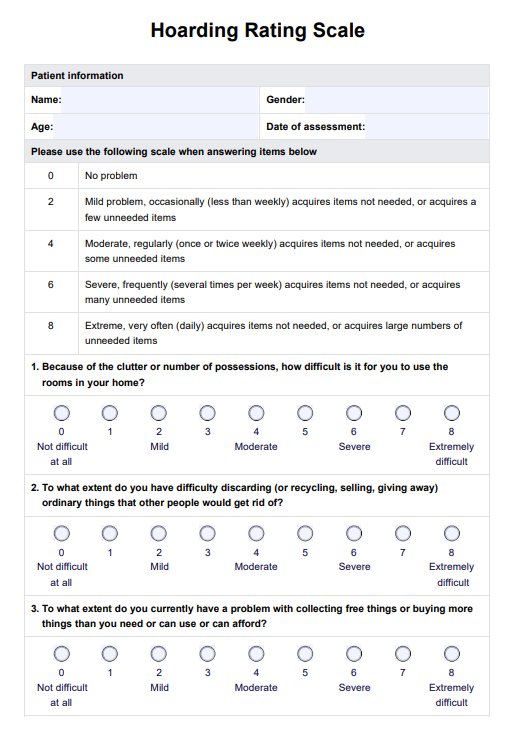The 5 levels of hoarding are a classification system used to describe the severity of clutter and functional impairment in a person’s living environment, ranging from Level 1 (mild) to Level 5 (extreme). Each level considers factors such as access to rooms, sanitation, structural damage, and the presence of health or safety hazards.

Hoarding Rating Scale
Assess hoarding symptoms with the Hoarding Rating Scale. Download a free PDF, view examples, and learn how to score and interpret clinical severity.
Hoarding Rating Scale Template
Commonly asked questions
Common screening tools for hoarding disorder include the Hoarding Rating Scale (HRS-I), Saving Inventory-Revised (SI-R), and the Clutter Image Rating (CIR) scale. These tools help clinicians evaluate hoarding symptoms, clutter severity, and functional impairment.
A Hoarding Rating Scale total score of 15 exceeds the clinical cutoff of 14 and suggests the likely presence of hoarding disorder. It indicates significant severity across multiple symptom dimensions and may warrant diagnostic follow-up and treatment planning.
EHR and practice management software
Get started for free
*No credit card required
Free
$0/usd
Unlimited clients
Telehealth
1GB of storage
Client portal text
Automated billing and online payments











